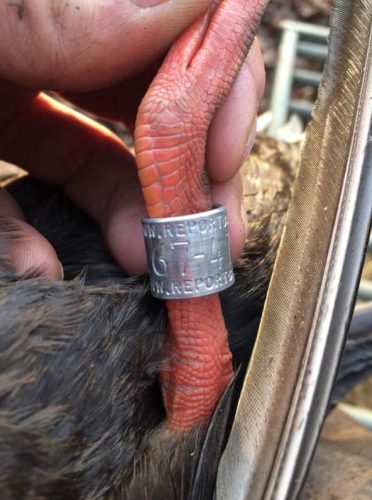Fun Facts About Ducks
Quack, quack: You're about to learn some fascinating facts about ducks and the unique ways they inhabit the world.


For last week’s column, I wrote about waterfowl migration season and where to see ducks in Cumberland County. I also mentioned the two premier places to see ducks in southern New Jersey—Cape May Point State Park and Edwin B. Forsythe National Wildlife Refuge in Galloway Township.
On November 19, we checked out a number of Cumberland County’s top spots for ducks and came up empty. However, the previous day we had a banner outing at Forsythe. As the weather gets colder, duck sightings should pick up here in southern New Jersey. This week, I’d like to discuss some interesting facts about our waterfowl.
I devoted a past article to the two major groups of ducks—dabblers and divers. Dabbling ducks feed on the surface and dip their heads into the water, stretching their necks to reach their desired food along the bottom. Diving ducks, on the other hand, completely submerge themselves to feed on seaweed, mollusks, fish, or the invertebrates that are abundant in our rivers, in the bay, or out in the open ocean. Most of our diving ducks breed fairly far to the north, ranging all the way from the boreal forests of Canada up to the high Arctic.
When you are watching ducks you get a lot of time to identify the dabblers but the divers can be elusive. In fact, if you see a lot of bufflehead ducks when you are out scouting with a friend you may point them out only to find a large portion disappear. Be patient; they will resurface, not always where you expect them to appear but they will be back, possibly only for you to be fooled again by your pointing them out to your friend: “There!”—and off they’ll fly.

By the way, pointing out wildlife is a really good way to scare it off. Try to use landmarks: “To the right of the stump; at one o’clock in the big oak; in line with that flag pole.” From experience I can tell you that resisting pointing is very difficult.
Ducks are gifted swimmers with waterproof feathers and webbed feet. Their feathers are barbed and interlock to essentially zip out the weather, wind, and moisture. Preening them involves arranging them with their bill while spreading an oily substance from their uropygial or preen gland. These oils create a waxy coating, which protects the inner down that insulates them from the cold. The preening of their plumage also helps to keep the interlocking nature of their feathers tidy.
The webbed feet on ducks serve many purposes. They spend about 80 percent of their time on the water, and lands adjacent to the water are wet—yes, wetlands, so they are boggy. When walking on the marsh plain, webbed feet keep them from sinking in, much like a snowshoe keeps a person on top of the snow.
Conversely, in the water the webbed foot is an adaptation that is great for swimming. When the foot is drawn back through the water, the toes are held apart so the web can push like a paddle against the flow. When the leg is pushed forward, the toes are held together to lessen resistance and get in place for the next stroke.
Most ducks’ legs are set toward the back third of their bodies, so as to propel them forward. On land this adaptation is not as efficient; it contributes to their waddle and requires them to stand more erect to balance.

Our diving ducks have some rather spectacular statistics. Long-tailed ducks can dive up to 200 feet below the water, and they also are known for their long foraging excursions where they spend three to four times longer under the water than on the surface. Some other divers’ statistics aren’t as impressive but are nevertheless neat—mergansers can plunge 110 feet, scoters 30 feet, scaup 130 feet, bufflehead 14, canvasback 30, and redheads 12.
Ducks have very strong chest muscles that allow them to fly great distances in migration. Again they rack up some pretty extraordinary statistics: They can fly as high as 21,000 feet (unfortunately, this record-holding mallard was struck by a plane, according to Ducks Unlimited), and most will migrate at 200 to 4,000 feet. On average they fly about 50 mph, however some can achieve much greater speeds. A red-breasted merganser was recorded flying at 100 mph; this is about 40 mph faster than a cheetah, the world’s fastest land animal. Mallards have been known to travel 800 miles in an eight-hour flight. That is about the distance from southern New Jersey to Orlando, Florida; one wonders what Donald Duck might say about that!
To fly these kinds of distances, rest and food are important. Ducks are omnivorous, opportunistic eaters and will eat grass, aquatic plants, insects, seeds, fruit, fish, crustaceans, etc.

Birds’ brains involve two separate hemispheres, allowing them to rest one half of their brain while the other half stays awake. This faculty is termed unihemispheric slow-wave sleep. They utilize this ability when flocking together on water or land. Scientists studied mallards at night and discovered that on the outer edges of a group, ducks keep their outward-looking eye alert to danger while sleeping, the eye looking toward the flock. Ducks in the middle often have both eyes shut.
The shape of their eyes gives them the ability to see both near and far simultaneously in clear focus. Their eye placement on the side of their heads allows them to see nearly 340 degrees. Furthermore they can move their eyes independently and they have four-dimensional color vision.
What is all the chatter about, when you’re watching ducks? They definitely have calls to bring in other flocks, and a proficient duck enthusiast can tell one species from another by sound. Some are rather easy but others are a challenge. However, oddly enough some studies show that ducks have regional accents, and that city ducks are louder than ducks found in less populated areas. In songbirds, songs and plumage are important when attracting a mate. In ducks the female is known to select her mate primarily based on courtship displays.
How long do ducks live? According to the U.S. Geological Survey these are some of the oldest waterfowl reported by waterfowl hunters, based on recovered leg bands—mallard, 27 years; black duck, 26 years; blue-winged teal, 23 years; redhead, 23 years; wood duck, 23 years; northern pintail, 22 years; ring-necked duck, 20 years; green-winged teal, 20 years (rounded to nearest year).
Again, as things get colder more ducks will visit our region, so bundle up, grab some binoculars, and marvel in the spectacle that nature presents. And don’t forget to wiggle your tail feathers; a nice courtship display is good for the soul.
Sources
- Middlesex University London, “How our research has shown that ducks have regional accents.”
- Scientific American, “Meet the Animals That Literally Sleep with One Eye Open,” Gian Bastone Mascetti. June 1, 2019.









